#płaszów
Text

Amon Goeth, camp commander of the Plaszow concentration camp from February 1943 until September 1944. A brutal man, he was fond of shooting prisoners from his balcony. Ralph Fiennes protrayes Goeth in "Schindler's List".
21 notes
·
View notes
Text
Críticas – A Lista de Schindler (1993), O Pianista (2002), Uma Vida — A História de Nicholas Winton (2023)
“Quem salva uma vida, salva o mundo inteiro.” (Talmud)
Oskar Schindler (1908 – 1974) nasceu em Svitavy (Zwittau), Morávia, uma província da monarquia Austro-Húngara na época. Após a invasão alemã na Tchecoslováquia o industrial se filia ao partido nazista com o intuito de comercializar no mercado negro, uniformes poloneses, a fim de simular uma invasão falsa á Alemanha que justificasse a…
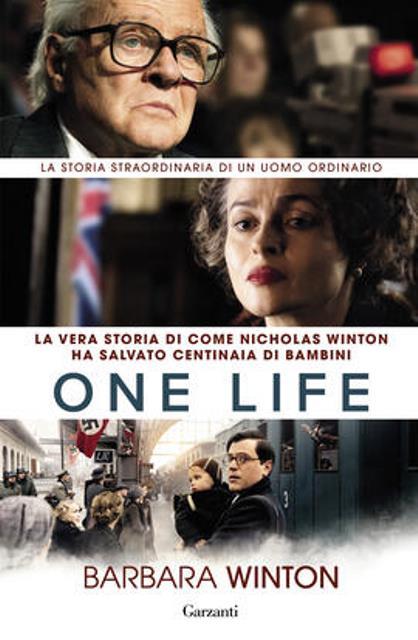
View On WordPress
#A garota do casaco vermelho#Adolf Hitler#Adrien Brody#Anjo de Hamburgo#Anthony Hopkins#Auschwitz#campo de concentração de Płaszów#campo de extermínio de Treblinka#Capitão Wilm Hosenfeld#Caroline Goodall#Cracóvia#Emilie Schindler#Exército Vermelho#Grete#Helena Bonham Carter#Holocausto#jardim dos justos#Johnny Flynn#Kindertransport#Lena Olin#Levante do Gueto de Varsóvia#Liam Neeson#Luiz Martins de Souza Dantas#Museu do Holocausto#O Pianista#O Pianista (2002)#Operação Reinhard#Oskar Schindler#Praga#Ralph Fiennes
0 notes
Text

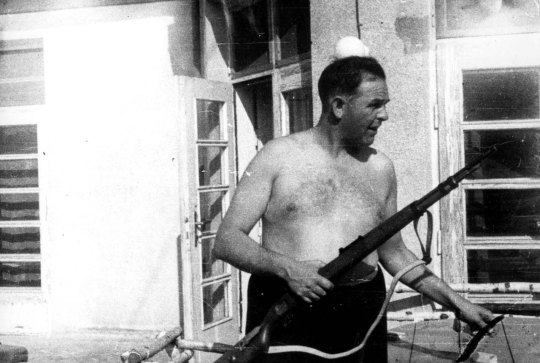
If you’re familiar with the film, Schindler’s List, then you probably already know who this is. Amon Goeth, aka “The Butcher of Płaszów,” was born in Vienna on the 11th of December, 1908. Before WWII, Goeth worked as a clerk. On the 13th of February, 1942, Goeth became the commandant of the Kraków- Płaszów concentration camp and was known for his sheer brutality. As commandant, he was the superior of all the other minor camps and had the right to enter these camps whenever he wanted.
He participated in the liquidation of the ghettos and took pleasure in killing. By April of 1944, he was promoted to the rank of SS-Hauptsturmfuher and appointed a reserve officer of the Waffen-SS. He wallowed in luxury at the Kraków- Płaszów concentration camp, living in a villa with a swimming pool in the garden. From his balcony, he shot prisoners for walking too slow. He trained his two dogs to attack at his command and used them as a weapon.
Following the war, he was put on trial. Wladyslaw Kopystecki testified to his brutality at the camp: “When he came to the camp with his dog, in a white shirt, in high boots, he found her at the back eating a potato. He shot her in the head. She fell in the cauldron. Then he called two Jews who worked in the stable and ordered them to throw her to the other cauldron with boiling water… The Jews threw her inside, she still lived, and she moved her legs splashing that boiling water. So he ordered to cover her and walked away.”
Another prisoner testified that he also enjoyed killing children: “A six-year-old boy, after being dropped from a truck, began to run away. Goeth called: “Come, don’t be afraid!” The boy stopped. He took a mirror and son toys out of his pocket, trying maybe subconsciously to avoid death. With a forgiving smile, Goeth took everything from him only to shoot the boy with his own hands.“
Goeth was hanged on the 13th of September, 1946.
40 notes
·
View notes
Text
Amon Göth


These are some facts and curiosities about Amon Göth, the butcher of Płaszów:
He was born on 11 December 1908 in Vienna, from a wealthy Catholic family operating in the book publishing sector.
He dropped out of school at the age of 17 to pursue his interest in radical right-wing ideas.
He joined the local youth section of the Austrian Nazi Party in 1925
His decision to join the party at this early stage meant that he was considered an Alter Kämpfer (Old Fighter), that is, one who had joined the party before the accession of Adolf Hitler to the position of Chancellor of Germany.
Göth joined the Austrian SS in 1930 and gained full membership in 1932 after a two-year application period. It was named SS-Mann with the number SS 43.673
Göth was assigned to the SS-Totenkopfverbände ("Death's Head unit"; concentration camp service). His first assignment, starting on 11 February 1943, was to supervise the construction of the 200-acre Kraków-Płaszów concentration camp, of which he was expected to command
In addition to his duties in Płaszów, Göth was the officer in charge of the liquidation of the Tarnów Ghetto
On Yom Kippur (the holiest holiday in the Jewish calendar) in 1943, Göth ordered fifty prisoners to be shot without cause.
He killed many people just because they dared to cross him - for looking him in the eye, when they should have lowered their gaze as a sign of deference - for having served him too hot soup or for not having cleaned his bathtub thoroughly.
He died on September 13, 1946.
He married twice and had at least three children.
his granddaughter Jennifer Teege wrote “My Grandfather Would Have Shot Me: A Black Woman Discovers her Family’s Nazi Past.”
He was played by Ralph Fiennes in the film Schindler's List (1993).
Sources:
Wikipedia: Amon Göth
United States Holocaust Memorial Museum ( pictures and other informations)
Hitler and his loyalist: Paul Roland
CNN ( for the part about his family.)
if you don't like it go with your life :)
I DON'T SUPPORT IN ANY WAY NAZISM, FASCISM OR ZIONISM, THIS IS AN EDUCATIONAL POST
32 notes
·
View notes
Video
EP07 1050: PKP InterCity por Matei Stefan
Por Flickr:
Waiting for new orders 1.12.2022, Kraków Płaszów
3 notes
·
View notes
Text
When “all the gates of compassion seemed to have been closed”, what is to be done?

Winner of seven Academy Awards, including Best Picture and Best Director, Schindler’s List is the incredible true story which follows the enigmatic Oskar Schindler (Liam Neeson), who saved the lives of more than 1,100 Jews during the Holocaust.
It is the triumph of one man who made a difference and the drama of those who survived one of the darkest chapters in human history because of what he did. Schindler’s List is a powerful story whose lessons of courage and faith continue to inspire generations.
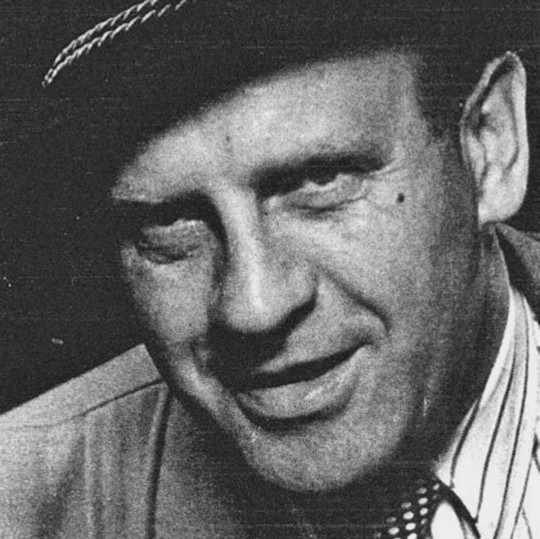
Following the Nazi invasion of Poland, Oskar Schindler, a German Catholic industrialist, moved to Kraków and assumed responsibility for the operation of two formerly Jewish-owned manufacturers of enamel kitchenware. He then established his own enamelworks in Zabłocie, outside Kraków. That factory became a haven for about nine hundred Jewish workers, providing them relief from the brutality of the Płaszów labor camp nearby.
In October 1944 Schindler was granted permission to relocate his defunct enamelworks to Brünnlitz, Czechoslovakia—this time as an armaments factory—and to take with him the Jewish workers from Zabłocie. He succeeded in transferring to Brünnlitz approximately eight hundred Jewish men from the Gross-Rosen camp and three hundred Jewish women from Auschwitz, ensuring their humane treatment and, ultimately, saving their lives.
In 1962, Yad Vashem awarded Schindler the title “Righteous Among the Nations” in recognition of his humanitarian contribution, and in 1993, the United States Holocaust Memorial Council posthumously presented to him the Museum’s Medal of Remembrance. This medal, rarely presented, is intended to honor deserving recipients for extraordinary deeds during the Holocaust and in the cause of Remembrance. Emilie Schindler accepted the medal on behalf of her husband at a ceremony in the Museum’s Hall of Remembrance.
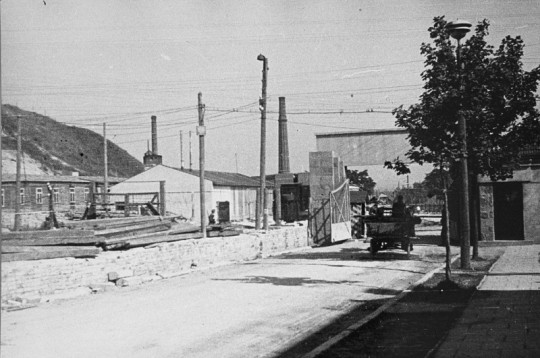
The Płaszów camp was established in 1942 under the authority of the SS and police leaders in Krakow. It was initially a forced-labor camp for Jews. The original site of the camp included two Jewish cemeteries. From time to time the SS enlarged the camp. It reached its maximum size in 1944, the same year that it became a concentration camp. Until that time, most of the camp guards were Ukrainian police auxiliaries chosen from among Soviet soldiers in German prisoner-of-war camps and trained at the Trawniki training camp in Lublin.
The German industrialist Oskar Schindler established an enamelware factory in Krakow, adjacent to Płaszów. He attempted to protect his Jewish workers, some 900 people, from abuse in Płaszów and from deportation to killing centers. When he moved the factory and his Jewish work force to the Sudetenland in 1944, he prevented the deportation of more than 1,000 Jews.
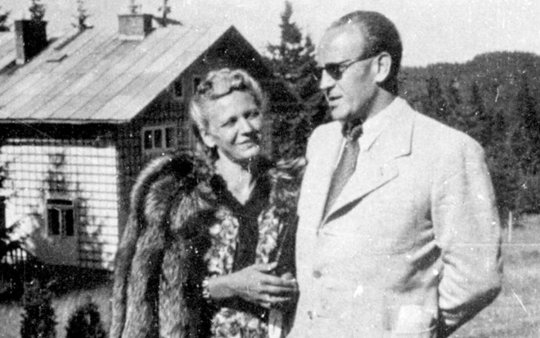
It soon became clear that her marriage would have both its passions and its betrayals. Yet Emilie stayed with Oskar through his growing involvement with the Nazis, working for counterintelligence with him. She first, then he later, came to realize the costs of the Nazi takeover and became witnesses to its terrors.
Through their work together at their two factories, saving the Jews became paramount for the Schindlers. Emilie nursed the Jewish factory workers when they fell ill, often saving their lives. She risked imprisonment or worse for her activities in the black market to feed them.
Where Light and Shadow Meet chronicles the Schindlers' flight after the war, the loss of almost all their possessions, and their eventual emigration to Argentina. There they settled on a farm, but barely scraped together an existence. Oskar returned to Germany, leaving Emilie to manage on her own. This is the story of one woman's daily acts of bravery during Hitler's reign and why it mattered.
#schindlers list#Holocaust Memorial Day#United States Holocaust Memorial Museum#hmd2023#manchester#education#oskar schindler#emilie schindler#ww2 history#uk#ww2 education#argentina#yad vashem#social media#books#book club#bookshops#germany#europe#media#film#BBC News#bbc iplayer
12 notes
·
View notes
Text
Review: Schindler's List

Synopsis:
In the shadow of Auschwitz, a flamboyant German industrialist grew into a living legend to the Jews of Cracow. He was a womaniser, a heavy drinker and a bon viveur, but to them he became a saviour. This is the extraordinary story of Oskar Schindler, who risked his life to protect Jews in Nazi-occupied Poland and who was transformed by the war into a man with a mission, a compassionate angel of mercy.
Plot:
Oskar Schindler was a con-artist business man, who from his flaws saved twelve hundred Polish Jews during the Holocaust A German industrialist, born April in 1888, in 1908 he married young to Emilie, even though both of their fathers disapproved of their marriage. Still married, Oskar constantly cheated on Emilie with other women, in which Emilie knew about. When Germany invaded Russia, Schindler and his friends thought Hitler would not have lasted. During his second arrest, Schindler found out it was because he kissed a Jewish girl. He joined the Nazi Party, not because he believed in the cause, but because he saw it as an opportunity to make money. Schindler then began to notice changes in his town in the Jewish communities, as they were forced to leave their homes and stores, and move into ghettos outside of the town limits. When the concentration camp Płaszów became a place, Schindler went there to recruit workers for his factory. The story then follows Schindler in his quest to con, manipulate, bargain, and risk all in order to keep his workers safe, and away from certain death in the gas chambers.
Thoughts:
Thomas Keneally wrote this book to document the life of Oskar Schindler, and how this man saved twelve hundred Jewish lives during world war two. Almost four hundred pages long, this book documents Schindler’s life, giving us details about early childhood, his marriage to Emilie, and ends the book with his death in 1974. Depending on who your high school history teacher was, you might know a lot or a little about who Oskar Schindler was, and if like me you had no idea, well this book is for you. Keneally told the truth of who Schindler was, a man who drank a lot, cheated on his wife, but defended the Jewish people from his fellow Nazis. Directed by Steven Spielberg in 1993, this academy award for best picture is over three hours long (yes, it is even longer than Waterworld), it is clear that Spielberg left nothing out from Keneally’s book. The book was titled extremely appropriate as “Schindler’s List” was an actual list of workers that Schindler wanted to take from the concentration camps to his factory, saving them from the gas chambers. This list became a symbol in the story of Jewish survival, but also anguish as there were many who did not make it onto the list. Where the book was not the most pleasant thing to read, as with it being a heavy topic, long chapters, and during times a dull read. Yet, the fact that this book is historically accurate to a certain degree, Keneally gives us another point of view of the Holocaust: A German man out to make money from Jewish labor, who in the end risks everything to move these people into his factory and away from the concentration camp’s gas chambers. This book is a must read, as the Holocaust is an event that should never be forgotten, and this book allows readers to realize that during this time of such dark history, one person can change so much, and thus, his legacy should also not be forgotten.
Read more reviews: Goodreads
Buy the book: Amazon
0 notes
Text
February 2024 Book Club Picks

My Grandfather Would Have Shot Me: A Black Woman Discovers Her Family's Nazi Past by Jennifer Teege: Raised by foster parents, Jennifer Teege had very little knowledge about her past. She had minimal contact with her birth mother, knew that her father was Nigerian, and that her grandmother Ruth committed suicide in 1983, but that was it...until one day she stumbled upon a book in her local library. A book about Amon Goethe, the notorious Nazi commandant, the “butcher of Płaszów", a monster hanged in 1946 for the heinous murders he committed for Hitler's Reich. And in that book, she finds pictures of her grandmother and mother, listed as Goethe's partner and daughter. Everyone wants to know who they are, where they come from. But now Teege must reckon with what we do when we learn that we come from something dark, twisted, and almost too horrible to talk about.
The End of Policing by Alex S. Vitale: Recent years have seen an explosion of protest against police brutality and repression. Among activists, journalists and politicians, the conversation about how to respond and improve policing has focused on accountability, diversity, training, and community relations. Unfortunately, these reforms will not produce results, either alone or in combination. The core of the problem must be addressed: the nature of modern policing itself. Drawing on groundbreaking research from across the world, and covering virtually every area in the increasingly broad range of police work, Alex Vitale demonstrates how law enforcement has come to exacerbate the very problems it is supposed to solve.
Out There Screaming: An Anthology of New Black Horror by Jordan Peele (editor): Two Freedom riders find themselves stranded on a lonely road in Alabama. A prison warden discovers a horrible secret in the facility where he works. A young girl descends into the bowels of the earth to destroy the creature that killed her parents. Peele collects there stories and more from some of the most gift black horror authors writing today in an anthology sure to thrill, chill, and linger.
Mislaid in Parts Half-Known by Seanan McGuire: When Antoinette "Antsy" Ricci becomes the newest student at Eleanor West's Home for Wayward Children, word spreads quickly that she can find anything. When resident irresistible mean girl Laurel tries to strongarm Antsy into finding Laurel's door for her, she's forced to flee with a small group of friends through a series of doors...which eventually lead her back to the Shop of Lost Things. And now that Antsy is back, she intends to make sure Venita and Hudson are keeping their promise
Ejaculate Responsibly: The Conversation We Need to Have About Men and Contraception by Gabrielle Blair: Why are women expected to shoulder the majority of the burden for preventing unwanted pregnancies? With fertility that's harder to track and birth control that's more invasive, more hazardous, and more difficult to obtain, it seems almost counterproductive that the men in the pregnancy equation are expected to take less or even no responsibility in pregnancy prevention than women. In 28 concise arguments, Blair lays out a new way to look at birth control and abortion, with one, simple thesis underlying all of it - men can prevent 100% of unwanted pregnancies if they simply ejaculate responsibly.
#book club#february 2024#my grandfather would have shot me#jennifer teege#the end of policing#alex s. vitale#out there screaming#jordan peele#mislaid in parts half known#seanan mcquire#ejaculate repsonsibly#gabrielle blair
0 notes
Text
Smród na południu Krakowa? Mieszkańcy wystosowali petycję!.
Mieszkańcy południowych dzielnic Krakowa od lat zmagają się z uciążliwościami odorowymi, które nie zostały rozwiązane pomimo licznych apeli i obietnic lokalnych polityków i prezydentów miasta.
Wiele miejsc, takich jak Podgórze, Płaszów, Kabel, Bagry, Rybitwy, Wola Duchacka i Złocień, jest dotkniętych tym problemem1. Mieszkańcy zdecydowali się na złożenie petycji w celu przyciągnięcia uwagi…

View On WordPress
0 notes
Text
Amon Göth-Pure evil
Amon Göth was sentenced to death and was hanged on 13 September 1946 at the Montelupich Prison in Kraków, not far from the site of the Płaszów camp, the camp he had been in charge of until two years, to the date, prior to his execution.
On 13 September 1944, he was relieved of his post and charged by the SS with theft of Jewish property (which belonged to the state, according to Nazi…

View On WordPress
0 notes
Video
youtube
3D-Trip: Kolejowe cmentarzysko - Parowozownia Płaszów [Kraków, Poland]. ...
1 note
·
View note
Link
0 notes
Text




#schindler's list#film#movie#war#world war ii#nazi#nazis#ss#concentration camp#Płaszów#Auschwitz#poland#polska#history#historia
3 notes
·
View notes
Photo

Plaszów concentration camp (Krakow). #plazsow #plaszow #plaszowconcentrationcamp #płaszów #plaszowcamp #plaszowmemorial #nooblidaremmai #neverforget #pernondimenticare #paranoolvidar #malapevnostterezin #chusayinka #holocaust #shoa #holocaustmemorial #krakow #kraków #poland #polonia #cracovia #polska #polska🇵🇱 #polonia🇵🇱 #krakowexperience #krakowpoland #visitkrakow (en Plaszów concentration camp) https://www.instagram.com/p/CXPIR27Kt17/?utm_medium=tumblr
#plazsow#plaszow#plaszowconcentrationcamp#płaszów#plaszowcamp#plaszowmemorial#nooblidaremmai#neverforget#pernondimenticare#paranoolvidar#malapevnostterezin#chusayinka#holocaust#shoa#holocaustmemorial#krakow#kraków#poland#polonia#cracovia#polska#polska🇵🇱#polonia🇵🇱#krakowexperience#krakowpoland#visitkrakow
1 note
·
View note
Photo

2 notes
·
View notes


